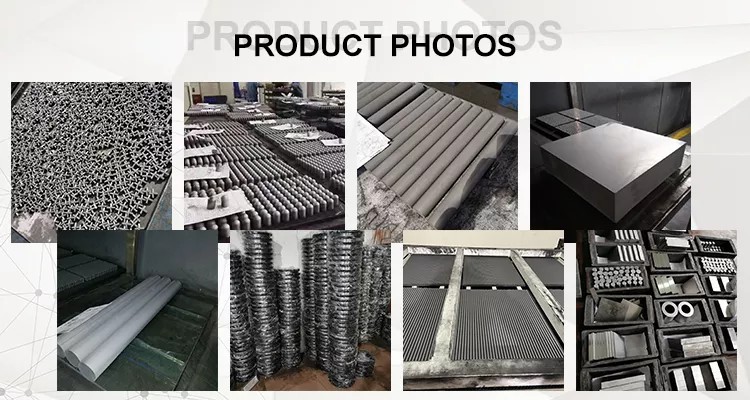
Tungsten alloys
Tungsten alloys, sometimes referred to as heavy alloys, are usually 90-97% tungsten with the rest of its composition being a matrix of metals which improve the ductility and machinability of the resulting alloy. There is no true naming standard for these alloys, as they are set individually by the manufacturer and are not superimposable onto a general scheme such as with the alloys of steel or aluminum. Regardless, this section will break down the popular types of tungsten alloys and in what applications they are often used.
Tungsten nickel iron alloys
The most common of the tungsten alloys, tungsten nickel iron alloys are top of the list in terms of ductility, strength, and density. They are a silvery-grey color, have a range of densities from 16.85-19.3 g/cm3, and are also known as Densalloy®, Mallory, WNiFe, and/or Densimet®. These metals have tensile strengths ranging from 600-1000 MPa, which surpasses most if not all other alloys. These alloys have good machining qualities and plasticity and can withstand intense temperatures, while still having a thermal conductivity that is 5 times that of die & punch steels. They have 1.7 times the radiation shielding capabilities of lead and are non-toxic to biological systems (which cannot be said for lead). Iron makes these alloys magnetic, which is important to know if they are planned to be used in any magnetism-sensitive operations such as medical imaging equipment. Tungsten nickel iron alloys have a low expansion coefficient useful for glass-to-metal seals and possess high moduli of elasticity, which makes them resistant to elastic deformation. These alloys are perfect for radiation shielding, as its high density matched with its radiation resistance are ideal for protective components. Some notable applications include balance weights, security and defense applications, ballasts, bearing assemblies, and more.

Tungsten nickel copper alloys
The non-magnetic cousin to tungsten nickel iron alloys is the tungsten nickel copper alloys. They are about as popular as nickel-iron alloys, but generally, have lower tensile strength (500-700 MPa) and ductility. They are great electrical conductors and are easy to machine despite their high mechanical strength. They possess excellent thermal stability and can shield from radiation about as well as other tungsten alloys. The greatest advantage to tungsten nickel copper alloys is their non-magnetic nature; this feature allows them to be used in applications where tungsten nickel iron alloys would be magnetically disruptive. They are widely specified in oncology tools, electrical sensor shields, guidance system components, and military technology.
Tungsten carbide
Tungsten carbide is not a true alloy, but a ceramic-like compound made by using the sintering process where carbon black is added to tungsten powder and shaped to produce an extremely hard and brittle cement once cooled. It can be monotungsten carbide (WC) or a matrix of ditungsten carbide (W2C), and each has its own unique properties based on composition and fabrication method. It is the most important tungsten compound, composing 60% of all tungsten applications, and is sold under at least 5000+ different names and grades. It is 2-3 times as rigid and dense as most steels and is currently one of our strongest engineering materials. While being extremely difficult to work, forge, machine, turn, or deform once made, tungsten carbide will resist galling/scratches/erosion/corrosion as well as drastic changes in temperature. It lasts up to 100 times longer than steel and is right next to diamond in hardness. This hardness allows tungsten carbide tools to cut almost all other materials with ease and allows for high-speed tooling. Some important applications of tungsten carbide are cutting tools, ammunition, mining and drilling, nuclear, recreational sports, surgical instruments, jewelry, and many more applications.

High speed/tungsten steels
Tungsten is used in certain alloys that are not covered by the previous sections; while not considered true tungsten alloys, they are the result of tungsten addition and are similar in both mechanical and chemical characteristics.
The first important category is high-speed steel (also known as tungsten steels), which are high hardness and high wear/heat resistance steels useful for processing equipment such as large drills, saws, etc. They utilize tungsten as well as its carbides to form more rugged and resistant steel and are often up to 18% tungsten by composition. These steels are more workable than tungsten alloys and can be heat treated, which allows manufacturers to have more control over the final shape and strength.
Superalloys
The second category is the so-called superalloys such as Hastelloy® or Stellite®, which are materials made to withstand extreme stresses. Hastelloy® is a nickel chromium molybdenum tungsten alloy (though, to blur the line even further, more metals are often present) and Stellite® is a matrix of cobalt, chromium, and tungsten carbide. They both exhibit similar mechanical properties to tungsten alloys with increased workability and are often used in turbines blades and other wear-resistant applications. There are new superalloys being researched right now, so expect these materials to become more prominent in the future.

